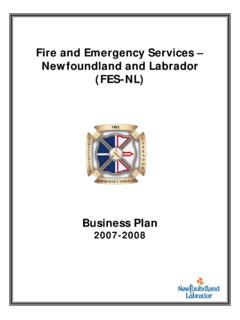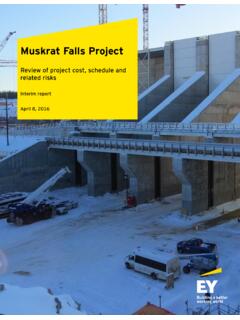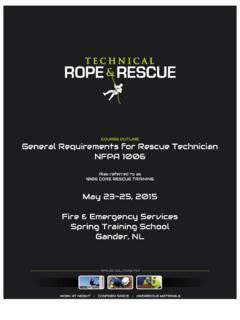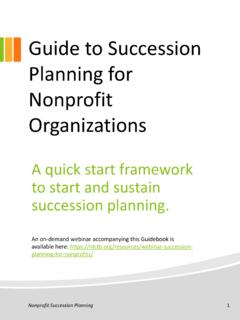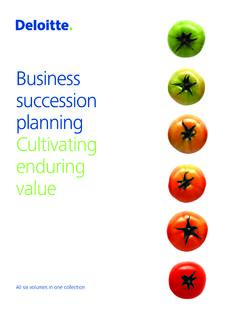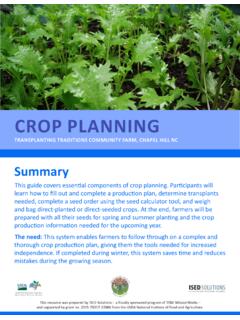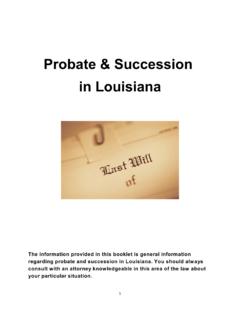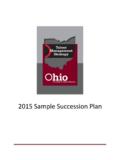Transcription of HUMAN RESOURCE PLANNING
1 HUMAN RESOURCE PLANNING Reference Tools HUMAN RESOURCE PLANNING Reference Tools TABLE OF CONTENTS TAB 1 Introduction 2 HUMAN RESOURCE / Workforce PLANNING and Departmental PLANNING o Supplement - A Guide to Integration and Alignment 3 Developing a Talent Pool o succession PLANNING o succession PLANNING and Management Guide o Capacity-Building o Relationship-Building o Bursaries o Internship Programs o Apprenticeship Programs o Learning and Development o Assignment Opportunities o Entry-Level Positions 4 Work Environment o Leadership o Communication o Health and Safety 5 Organizational Effectiveness o Structures, Processes.
2 And Position Descriptions o Scope of Practice o Departmental Collaboration 6 Additional Resources o Developing an Integrated Talent Management Program o Entry Interviews o Exit Surveys / Interviews o Attraction and Recruitment Strategies Public Service Commission STRATEGIES HUMAN RESOURCE PLANNING Reference Tools INTRODUCTION In order to position the organization for success, Departments have been engaged in workforce PLANNING . Corporately, three key directions have been identified to assist government in managing the workforce changes.
3 They include: 1. Building Our Potential 2. Strengthening Our Competitiveness 3. Renewing Our Workplace The purpose of this exercise was to ensure that our workforce and strategic objectives were aligned to guarantee the delivery of quality programs and services to the public, and that the PLANNING would assist in positioning the public service for the future. Through a collaborative process, each department developed their own workforce plan, which outlined their critical strategic issues for the next 3 5 years as well as proposed strategies to address those issues.
4 Some key examples of how departments can plan for the future workforce are outlined in this document and could be used to help mitigate any negative impacts as a result of demographics, government priorities and competency requirements. They can also help ensure that departments have what they need to get the job done, and that there is efficient matching of skills and competencies to departmental tasks, requirements and outcomes. To better compete in the global market, government will need to create and implement corporate strategies to promote itself as a preferred employer investing in progressive HR policies and programs with the goal of building a high-performing organization of engaged people, and fostering and creating a work environment where people want to work, not where they have to work.
5 HUMAN RESOURCE PLANNING Reference Tools Retention and attraction in today s changing labour market requires government to look at the key drivers that are important to employers and potential employees. Examples of these include offering employees: Diversified and Challenging Work An Attractive Compensation Package (not just salary) Advancement Opportunities Access to Continuous Learning Opportunities for Personal and Professional Growth An Inclusive Workplace Work-Life Balance Ongoing Recognition of Contributions to the Organization HUMAN RESOURCE PLANNING Reference Tools HUMAN RESOURCE / WORKFORCE PLANNING AND DEPARTMENTAL PLANNING - SUPPLEMENT A Guide to Integration and Alignment HR POLICY AND PLANNING DIVISION HUMAN RESOURCE BRANCH Public Service Secretariat April, 2008 Government of Newfoundland and Labrador Box 8700 St.
6 John s Newfoundland and Labrador A1B4J6 TABLE OF CONTENTS LINKING AND ALIGNING HR / WORKFORCE PLANNING TO DEPARTMENTAL PLANNING ..1 STEP 1 DETERMINE YOUR BUSINESS STEP 2 SCAN THE WORKFORCE INTERNAL EXTERNAL STEP 3 CONDUCT A GAP STEP 4 SET HR PRIORITIES TO HELP ACHIEVE DEPARTMENTAL STEP 5 MONITOR, EVALUATE, AND REPORT ON AN INTEGRATED PLANNING HUMAN RESOURCE AND DEPARTMENTAL PLANNING A GUIDE TO INTEGRATION AND ALIGNMENT Linking and Aligning HR / Workforce PLANNING to Departmental PLANNING Effective alignment of HUMAN resources / workforce PLANNING and departmental goals is critical in achieving both government priorities.
7 Departmental goals and objectives, as well as sustaining business continuity. o determine current and future HUMAN RESOURCE (HR) needs, a five step approach can be employed. Such steps include the following: determining business goals, undertaking environmental scans (including a workforce analysis, as well as internal and external scans), conducting gap analyses, setting HR priorities, and measuring, monitoring, and reporting on progress. The information and approach contained in this document is supplementary to the workforce PLANNING guidelines prepared in the Fall of 2006 by the Public Service Secretariat.
8 These two documents should be used together to develop a HR / workforce plan. T The primary focus of this document is to describe the steps involved in linking and aligning HR PLANNING / workforce PLANNING to departmental strategic / business PLANNING . Establishing HR priorities to help achieve business goals and measuring, monitoring and reporting on progress will be critical. 1 HUMAN RESOURCE AND DEPARTMENTAL PLANNING A GUIDE TO INTEGRATION AND ALIGNMENT Step 1 Step 1 Determine Your Business Goals A solid understanding of government and ongoing departmental business and HR priorities, emerging changes and trends, and the impact of legislative reforms are needed to determine business goals.
9 This step should also consider whether or not strategic partnerships (to facilitate business and HR PLANNING / workforce PLANNING efforts) should be established and ensure that accountability requirements are met. Government priorities are articulated in documents such as the Speech from the Throne, Budget Speeches and other applicable government documents, including departmental Strategic and Business Plans. This information is likely already available in existing departmental strategic / business plans. 2 HUMAN RESOURCE AND DEPARTMENTAL PLANNING A GUIDE TO INTEGRATION AND ALIGNMENT Step 2 Step 2 Scan the Environment Workforce Analysis Once business goals are understood, an understanding of the workforce, as well as PLANNING for projected shortages and surpluses in specific occupations and skill sets, will be required.
10 Key demographic employment data and characteristics ( sex, average age, occupational groups, skills/competency profiles, etc.), as well as internal workforce trends ( retirement eligibility, vacancy rates, turnover, etc.), are important factors to consider when conducting a comprehensive workforce analysis. This information is likely already available in existing departmental workforce plans, though it may require updating. Internal Scan The internal scan is primarily focused on identifying the factors within the department that might affect the HR capacity to meet departmental goals.

